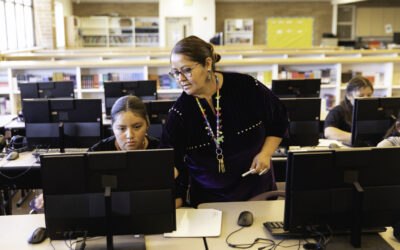Purpose of Algorithms in Computer Programming
The purpose of an algorithm in computer programming is to solve problems by providing a clear set of instructions that a computer can execute. Whether it’s calculating the fastest route from one location to another, sorting a list of names or searching for specific information within a database, algorithms are the tools that enable these tasks to be performed efficiently and accurately.
Importance of Algorithms
By converting complex problems into manageable steps, algorithms enable computers to perform operations from the simplest calculations to the most complex data analysis and artificial intelligence functions. Furthermore, the principles of algorithmic thinking—such as decomposition, pattern recognition, and abstraction—equip individuals with a powerful framework for tackling problems not just in computing, but in everyday life as well.
As technology continues to advance, the role of algorithms in enabling innovation, improving productivity, and enhancing our understanding of the world around us only grows more critical, making them an indispensable element of modern society.
Below are some of the top reasons algorithms are important:
1. Efficiency and Performance
The efficiency of an algorithm often determines the speed and resource consumption in the solving of a problem. An efficient algorithm can significantly reduce the time and memory required to perform a task. In the computer programming world, this is critical for applications that process large amounts of data or require real-time responsiveness.
2. Problem-Solving Skills
Understanding algorithms helps develop problem-solving skills. It encourages thinking about how to break down problems into manageable parts and then devising a systematic approach to solving them.
3. Foundation for Advanced Learning
Knowledge of algorithms is fundamental to more advanced topics in computer science, such as data structures, artificial intelligence, and machine learning. A solid grasp of basic algorithms paves the way for understanding these complex subjects.
Teaching Algorithms to K-12 Students
Introducing algorithms to K-12 students can seem daunting, but it can be done effectively with the right strategies and tools. Here are some approaches to help teach this concept:
Start with Everyday Examples
Begin by sharing real-life examples of algorithms that students are already familiar with. For example, a recipe is an algorithm for cooking a dish and the steps to solve a math problem can be viewed as an algorithm. This approach helps demystify algorithms and shows students that they already use algorithmic thinking without realizing it.
Use Visual and Interactive Tools
Leverage visual and interactive programming environments like Scratch, Blockly, or Tynker. These tools allow students to create programs using blocks that represent different parts of an algorithm. They provide a hands-on learning experience without the initial complexity of syntax, making it easier for students to grasp the concepts.
Encourage Algorithmic Thinking
Focus on developing algorithmic thinking rather than just coding skills. Present students with puzzles and challenges that require them to think about the steps needed to reach a solution. Encourage them to articulate their thought process, either through flowcharts, pseudocode, or simple explanations. This practice helps them understand the importance of planning and structuring their solutions before diving into coding.
Implement Project-Based Learning
Project-based learning can be highly effective in teaching algorithms. Allow students to work on projects that interest them, guiding them to apply algorithmic thinking to plan and execute their projects. This approach not only reinforces their understanding of algorithms but also enhances engagement and motivation.
Introduce Complexity Gradually
Start with simple algorithms and gradually introduce more complexity as students become more comfortable with the concept. For example, begin with linear search algorithms before moving on to binary search, or start with basic sorting algorithms like bubble sort before introducing quicksort or mergesort. This gradual progression helps build confidence and deepens understanding.
Collaborate and Share
Encourage students to work in pairs or small groups to solve problems. Collaboration fosters a deeper understanding as students explain their thinking to peers and learn from each other’s approaches. Additionally, create opportunities for students to share their projects and solutions with the class, further reinforcing their learning through teaching.
Contextualize Learning
Show students how algorithms impact the world around them. Discuss examples of how algorithms are used in various fields, such as medicine, finance, and entertainment. This not only illustrates the relevance of what they’re learning but also inspires them to consider how they might apply these concepts in their future careers.
Understanding Algorithms: Activities for Students
Creating and understanding algorithms is a fundamental skill in computer programming. Teaching this concept to K-12 students can be both enjoyable and informative, preparing them for more advanced computational thinking and problem-solving skills. Here are ideas for activities designed to engage students of various ages in the principles of algorithms.
1. Recipe Creation and Execution
Ages: Elementary to Middle School
Objective: Teach students the importance of clear, step-by-step instructions.
Activity: Have students write a “recipe” for a simple task, such as making a sandwich or drawing a basic picture. Then, in pairs, they exchange recipes and follow the instructions exactly as written. This activity highlights the need for precision in algorithms.
2. The Human Robot
Ages: Elementary
Objective: Introduce the concept of algorithms as instructions for computers.
Activity: Designate one student as the “robot” and the others as programmers. The programmers must give the robot a set of instructions to perform a simple task, like moving a book from one desk to another. The robot follows the instructions literally, illustrating the importance of specificity and order in algorithms.
3. Treasure Hunt
Ages: Middle School
Objective: Demonstrate how algorithms use conditions and loops.
Activity: Create a treasure hunt where students must follow a series of clues to find a prize. Each clue requires performing a task or solving a puzzle that involves conditional logic (if this, then that) or repetition (do something several times). This can be done in the classroom or outdoors.
4. Algorithm Art
Ages: Middle to High School
Objective: Show how algorithms can create complex and beautiful patterns.
Activity: Challenge students to create art using simple algorithms. This can be done with paper and pencils or with online tools like TurtleArt. Students can use loops and conditionals to draw patterns, learning about the mathematical principles behind algorithms.
5. Sorting Race
Ages: Middle to High School
Objective: Teach about sorting algorithms and their efficiency.
Activity: Divide students into groups and give each group a set of numbered cards. Each group must come up with their own method to sort the cards in ascending order as quickly as possible. After the race, discuss the different methods (algorithms) used and introduce formal sorting algorithms like bubble sort or quick sort.
6. Sequencing
Ages: Early Elementary
Objective: Teach basic algorithm concept and sequencing
Activity: Divide students into groups and give each group a set of cards with illustrations depicting different steps for an activity (such as making a sandwich). Ask them to put the cards in order from beginning to end. Discuss what other activities they do in everyday life might be considered an algorithm, then as a class, brainstorm the steps to complete an activity.
7. Escape Room Challenge
Ages: High School
Objective: Apply algorithmic thinking to problem-solving in a complex scenario.
Activity: Design a classroom escape room where students must solve puzzles that require algorithmic thinking to “escape.” Each puzzle can cover a different aspect of algorithms, such as decoding messages (understanding encryption algorithms), finding the shortest path out of a maze (pathfinding algorithms), or solving a logical puzzle.
These activities are designed to make the concept of algorithms accessible and engaging for students from kindergarten to 12th grade. By starting with simple, tangible tasks and gradually introducing more complexity, students can develop a solid understanding of algorithms and their applications in computer programming and everyday problem-solving.
Final Thoughts
Teaching algorithms to K-12 students is about more than just programming; it’s about fostering analytical, creative and problem-solving skills. By starting with relatable examples, using visual and interactive tools, and gradually increasing complexity, educators can effectively introduce students to the fascinating world of algorithms. This foundational knowledge not only prepares students for advanced studies in computer science but also equips them with critical skills for navigating a technology-driven world.

Learning.com Team
Staff Writers
Founded in 1999, Learning.com provides educators with solutions to prepare their students with critical digital skills. Our web-based curriculum for grades K-12 engages students as they learn keyboarding, online safety, applied productivity tools, computational thinking, coding and more.
Further Reading
How Were the TEKS Created & What is Its Significance?
The Texas Essential Knowledge and Skills (TEKS) framework details the educational standards in the state of Texas, providing a comprehensive outline...
CIPA Compliance Made Easy with Learning.com
The Children’s Internet Protection Act (CIPA), enacted by Congress in 2000, addresses concerns about children’s access to harmful online content. It...
Students as Logical Thinkers: How Computer Science Teaches Real-World Skills
There is little debate that computer science education has become an imperative curriculum for future-ready students. From modern professions and...




